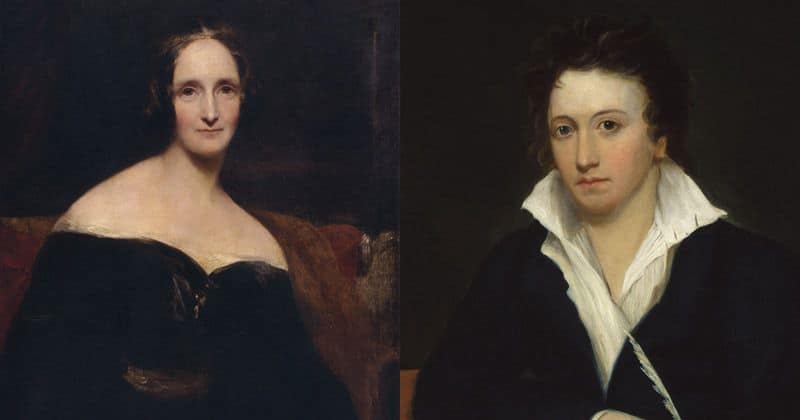It would not be too lazy an observation to make that the Romantic Poets of the late-18th and early-19th century were the rock stars of their day. By this, we mean proper rock stars: the scandalous, amoral hedonists of the 1970s, whose legendary and real antics have gone down in history, not today’s carefully-marketed, Instagramming facsimiles. For the Romantic Poets lived life with a devil-may-care attitude towards morality and acceptable standards of behaviour wholly in public view. They drank heavily, took hallucinogenic drugs, and had a slew of affairs. They even found time to write some poems along the way.
Although we must not lose sight of this latter detail, it is often hard to detach the poetry from the biography of its creators, especially in the example of Lord Byron, who was fond of writing semi-autobiographical pieces. In this article, therefore, we will be attempting to strike a balance between gasping at some of the Romantic Poets’ behaviour and appreciating relevant quotations. Not all of the Romantic Poets were all that bad, either: William Wordsworth was an important Romantic, but his personal life was anything but shocking (unless we suspect him of being in love with his sister, Dorothy).
Wordsworth and the first English Romantic Poet, William Blake, thus do not feature as heavily as the poets they influenced in this list. But perhaps the Romantics’ most shocking contribution was not the blaze of offended establishment figures and illegitimate children they left in their wake but the effect they had on poetry, tastes, and the cult of celebrity. We will examine this in detail immediately below but, for now, open a bottle of expensive wine, locate some suitably decadent food, and get ready to indulge yourself in the extravagant lives of the Romantic Poets.

Who were the Romantic Poets?
Romanticism was a profound literary, artistic, and cultural movement around the turn of the 19th century. The movement is notoriously hard to define, not least because its adherents attempted to resist definitions, and preferred the nebulous, indefinite, and boundless. Generally speaking, Romanticism as a movement saw the values of imaginative spontaneity, wonder, and emotional self-expression as the most important part of art. Perhaps it’s easier to understand Romanticism by looking at what the movement was a response to: the so-called Augustan Age, in which self-restraint, balance, order, and objectivity were championed. Romanticism was self-consciously the very opposite of this movement.
As illustration, let’s think of gardens (bear with me). The Augustan Age liked highly artificial, cultivated gardens, with symmetrical rows of neat flowers and elegant water features. The Romantics preferred wild, untrammelled nature, and asymmetrical features. As tastes changed, English Aristocrats had their landscape architects incorporate (ironically artificial) features which proclaimed the power of nature: ruined abbeys, uncultivated areas of woodland, anything that reminded them of man’s general insignificance by comparison to nature. A Romantic poet would sooner look at a wild moor or craggy mountain range than the gardens symbolising man’s power over nature at the Palace of Versailles.
Romanticism’s love of nature was thus a sea-change from previous attitudes, and its influence can still be felt today in the importance of preserving natural environments from the incursion of towns and cities. But perhaps most important of all was the value it placed on self-expression and personal feelings. Where the Augustan Age tried to keep subjectivity out of any observation, the Romantics argued for the value of one’s personal reaction to things. Thus poetry, in particular, changed to something resembling its current form, in which the poet’s perspective on a topic, event, or scene is the chief subject.
This poetic movement was formally announced by the 1798 publication of Lyrical Ballads, a joint collection of poetry by William Wordsworth and Samuel Taylor Coleridge. As Wordsworth explained in the Preface to the 1800 edition, ‘the principal object, then, proposed in these Poems was to choose incidents and situations from common life, and to relate or describe them, throughout, as far as was possible in a selection of language really used by men, and, at the same time, to throw over them a certain colouring of imagination, whereby ordinary things should be presented to the mind in an unusual aspect’.
Romanticism, then, involved freeing the artistic mind from the examples of the past, with the imitation of Greek and Roman models favoured by older poets such as Alexander Pope now being seen as limiting creativity. The poet was now an individual, not the latest inheritor of a tradition, who needed to find his own voice and medium. Finally, Romanticism’s love of disorder and emotional sensations included the supernatural. Ghosts, curses, and damnation are common themes in the poems, which previously were seen as unsuitable for versification. In this, they elevated the 18th-century Gothic movement to a high literary form.

